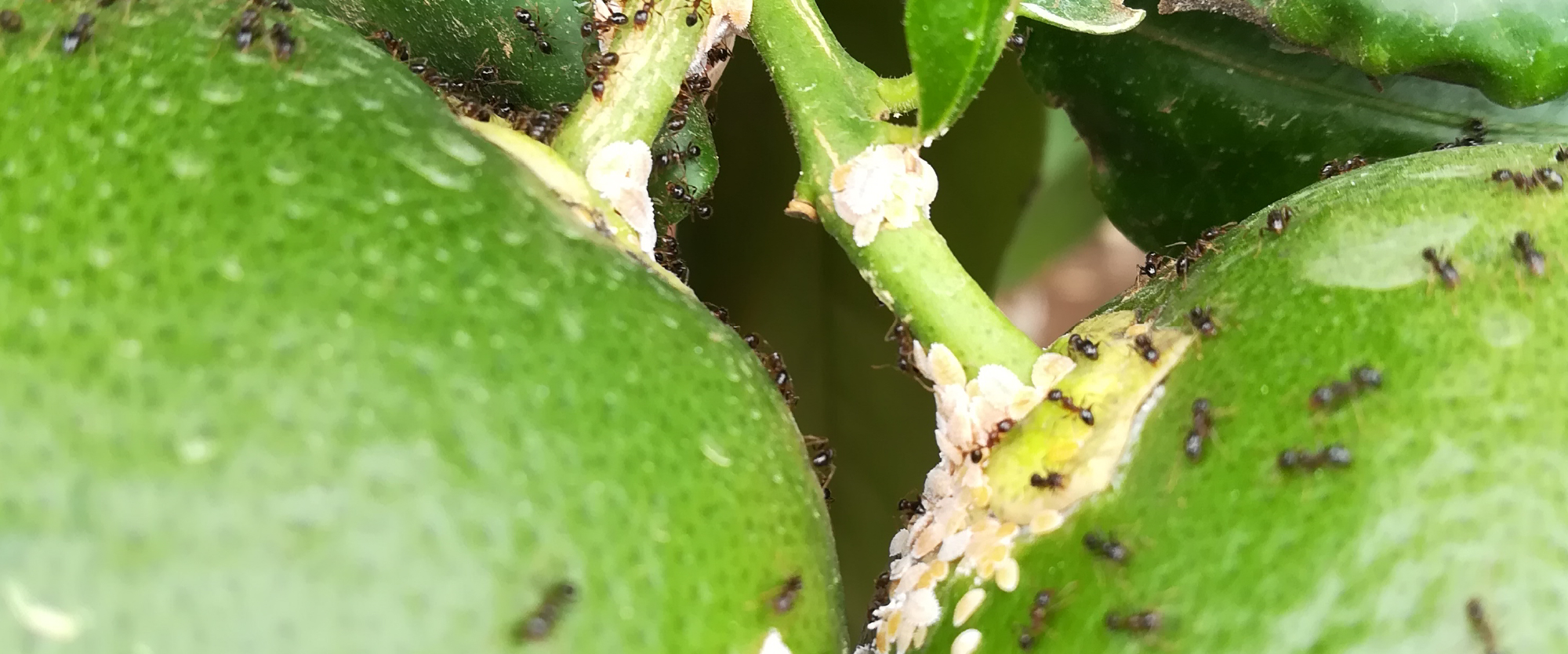The citrus mealybug (Planococcus citri) can be recognized by a slightly darker, longitudinal, dorso-median stripe and it’s orange-brown color with medium length wax filaments at the body margins. The adult female lays amber-yellow eggs in a fluffy posterior ovisac.
Damage
A high population of mealybugs can stunt normal plant growth. In fruit crops, mealybug infestations lead to fruit drop, fruit deformation and development of discolored welts on the rind of the fruit.
Mealybug secrete copious quantities of honeydew which is a substrate for a group of fungi, sooty mold. Sooty mold is black in color and may stain the fruit decreasing their market value as well as causing a delay in fruit color development. Photosynthetic potential, especially of young trees, may be negatively affected if sooty mold infection is severe. Mealybug is a phytosanitary pest in some export markets and if found on fruit destined for these markets, can result in rejection of the consignment and could place these markets at risk for the future.
There are various natural enemies for different species of mealybugs.
For more information contact your local BioBee field agent.























